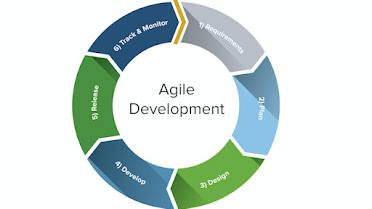How Agile Product Development Drives Innovation in 2024
Agile product development has
become synonymous with innovation in today’s fast-paced business environment.
As we move into 2024, the need for companies to stay ahead of the competition
by rapidly adapting to market changes has never been more critical. Agile
methodologies, with their focus on flexibility, collaboration, and
customer-centricity, are uniquely positioned to drive innovation. Here’s how Agile
product development is leading the charge in fostering innovation in
2024.
1. Rapid Iteration and
Continuous Improvement
One of the core principles of
Agile is the ability to iterate quickly and continuously improve. Unlike
traditional development models that often rely on lengthy planning and
development cycles, Agile allows teams to work in short, manageable sprints.
These sprints typically last two to four weeks, enabling teams to develop,
test, and refine their products incrementally.
In 2024, this rapid iteration is
a key driver of innovation. By breaking down the development process into
smaller, iterative cycles, teams can quickly respond to market feedback,
implement new features, and pivot strategies as needed. This flexibility ensures
that products are not only launched faster but also more aligned with customer
needs and market trends.
2. Enhanced Collaboration
Across Teams
Agile methodologies promote a
high degree of collaboration across cross-functional teams. Developers,
designers, marketers, and other stakeholders work closely together throughout
the development process, sharing insights and ideas. This collaborative approach
is essential for innovation, as it brings diverse perspectives into the product
development process.
In 2024, with remote work and
distributed teams becoming more common, Agile’s emphasis on collaboration is
even more vital. Tools like Slack, Jira, and Trello enable seamless
communication and project management, ensuring that team members can collaborate
effectively regardless of their location. This collaborative environment
fosters creativity and innovation, leading to more innovative product
solutions.
3. Customer-Centric
Development
Agile product development is
inherently customer-focused. By involving customers and end-users in the
development process, Agile teams can ensure that the products they create truly
meet the needs of their target audience. Regular feedback loops, such as
customer reviews and usability testing, are integral to the Agile process.
In 2024, this customer-centric
approach is crucial for driving innovation. As customer expectations continue
to evolve rapidly, companies that can adapt to these changes and deliver
products that exceed expectations will lead the market. Agile enables this by
allowing teams to incorporate customer feedback throughout the development
process, resulting in products that are not only innovative but also highly
relevant to users.
4. Risk Mitigation and
Flexibility
Innovation often involves taking
risks, but Agile product development provides a framework for managing these
risks effectively. By breaking down projects into smaller, more manageable
pieces, teams can identify potential issues early in the development process.
This early detection allows for quick adjustments and minimizes the risk of
large-scale project failures.
In 2024, the ability to mitigate
risks while maintaining flexibility is a significant advantage. Markets are
more volatile than ever, and the ability to pivot quickly in response to new
information or changing conditions is essential. Agile’s flexible nature allows
teams to experiment with new ideas, iterate on them, and implement the best
solutions with minimal risk.
5. Empowering Teams to
Innovate
Agile product development
empowers teams to take ownership of their work and make decisions that drive
innovation. The decentralized nature of Agile teams encourages creativity and
initiative, allowing team members to experiment with new ideas and approaches.
This empowerment is crucial for fostering an innovative culture within an
organization.
As we move through 2024,
companies that embrace Agile methodologies will find themselves better
positioned to innovate. By giving teams the autonomy to explore new ideas and
the tools to implement them quickly, Agile product development creates an
environment where innovation can thrive.
Conclusion
Agile product development is more
than just a methodology; it’s a catalyst for innovation. In 2024, as businesses
face increasing pressure to innovate and adapt, Agile’s emphasis on rapid
iteration, collaboration, customer-centricity, risk mitigation, and team
empowerment will be instrumental in driving successful product innovation.
Companies that embrace Agile will not only keep pace with market demands but
also lead the way in creating cutting-edge products that redefine industries.



Comments
Post a Comment